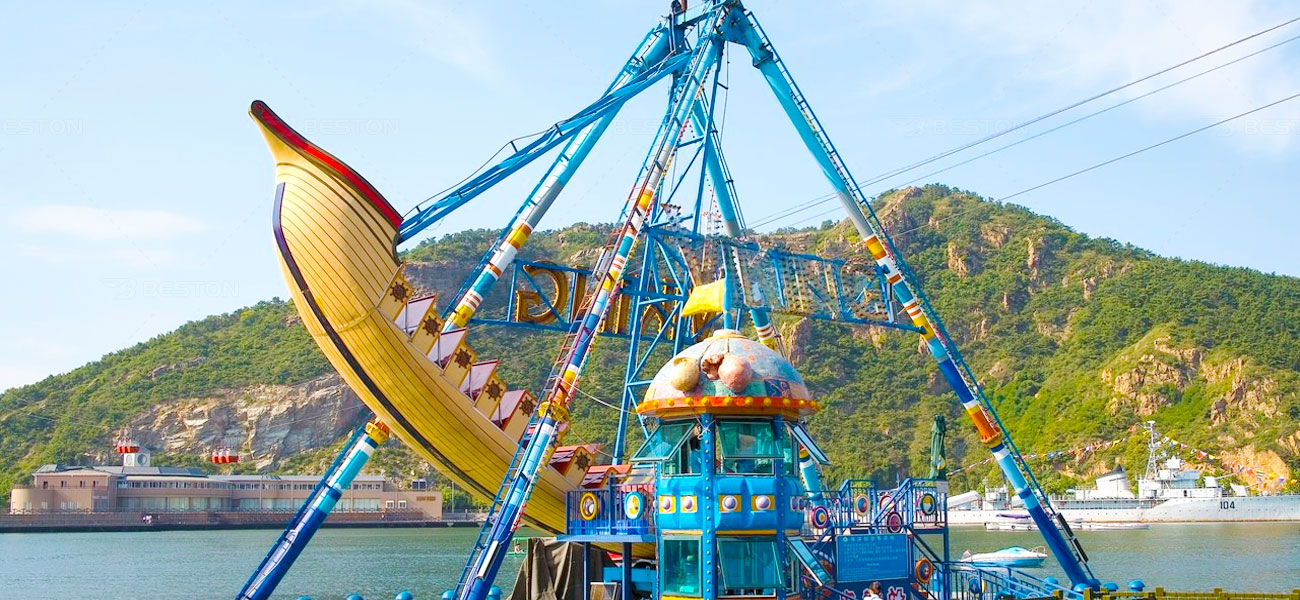Introducing a pirate ship ride to your amusement park is more than just selecting the most visually appealing model. One of the most critical, yet often underestimated aspects, is preparing your site for safe and efficient installation. The success of a ride begins well before the first swing—it starts with infrastructure, electrical planning, and layout precision.
In this article, we dive deep into the installation logistics and power needs for pirate ship rides (аттракцион корабль), and how this process differs from other vertical attractions like the drop tower ride or the iconic Ferris wheel.
Laying The Groundwork: Site Suitability And Engineering Requirements
Before any equipment arrives at your location, a comprehensive evaluation of the installation site must be conducted. Pirate ship rides exert massive forces at the base due to their pendulum motion, requiring structurally sound foundations.

Soil Testing And Foundation Work
- Conduct geotechnical soil testing
- Pour a custom concrete foundation as per manufacturer specifications
- Ensure level ground with water drainage considerations
Ignoring these requirements can lead to ride instability or premature wear on key components.
Understanding Power Demands For Optimal Performance
Power consumption varies by ride size, motor type, and operational cycle. Large pirate ships require powerful motors, similar to those used in drop tower rides (аттракцион башня падения) that must hoist and release heavy gondolas.
Electrical Load & Voltage Matching
- Voltage and phase requirements (commonly 380V, 3-phase for large rides)
- Total kilowatt load during peak operation
- Surge protection and dedicated transformer needs
It’s crucial that your park’s electrical grid can support the new ride without overloading or affecting nearby attractions. For instance, operating a pirate ship next to a high-draw Ferris wheel (сколько стоит колесо обозрения) or light-show area may require electrical upgrades.
Crane Access And Assembly Equipment Needs
The components of a pirate ship ride are large, often including the swinging arm, boat frame, and support towers. You will need crane access for offloading and erecting these parts safely.
Key Installation Tools And Safety Protocols
- A mobile crane with adequate reach and lifting capacity
- Certified riggers for secure lifting and bolting
- Safety harnesses and temporary scaffolding for elevated work
Ride manufacturers (экстремальные аттракционы купить) typically provide a technical manual outlining all assembly steps. However, hiring a team experienced in installing large attractions—such as drop tower rides—can help ensure your pirate ship is operational in days, not weeks.
Utility Provisions Beyond Electricity
Power isn’t the only infrastructure consideration. Your pirate ship attraction may also require:
- Control room space for ride operation
- Cooling systems or ventilation for control panels
- Lighting installations for nighttime operation
- Sound system wiring if onboard effects are included
These systems must be integrated into your existing utility networks or have dedicated installations prepared before the ride arrives.
Strategic Placement Within Your Park
Where you place your pirate ship ride can influence crowd flow, ride visibility, and even maintenance accessibility.
Traffic And Maintenance Pathways
- Sufficient queue area space
- Access roads for maintenance vehicles or cranes
- Placement away from wind tunnels or areas prone to flooding
Additionally, make sure your pirate ship doesn’t visually compete with taller rides like a Ferris wheel. Each ride should be showcased in a way that maintains the park’s skyline balance and encourages guests to explore different areas.
Timelines And Weather Considerations
Installation timelines can range from two days to two weeks, depending on ride size, weather conditions, and contractor coordination.
Avoiding Delays And Cost Overruns
Plan installation during dry seasons to avoid concrete curing delays or lifting complications due to wind. Ensure all permits, inspection schedules, and local code compliance documentation are arranged before delivery.
Budgeting For Hidden Installation Costs
The cost of buying a pirate ship ride is only one part of the equation. Installation can introduce hidden costs such as:
- Ground preparation and excavation
- Crane rental and operator fees
- Electric panel upgrades
- Structural engineer consulting fees
- Local inspection and licensing costs
Just like the maintenance requirements of a drop tower ride, these hidden expenses are crucial to long-term reliability and must be included in your initial planning phase.
Conclusion: Proper Planning Is The Foundation Of Ride Success
While pirate ship rides are undeniably thrilling and visually impactful, their successful deployment hinges on detailed preparation and proper infrastructure investment. Whether it’s ensuring your electrical grid can handle new loads or preparing the ground to support the swinging force, the technical groundwork is what sets the stage for success.
By approaching installation with the same precision you’d apply to setting up a Ferris wheel or drop tower, you can avoid unnecessary delays, reduce operational risks, and create a memorable ride experience for guests of all ages.
